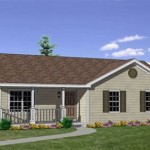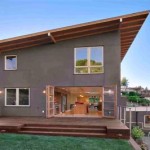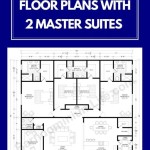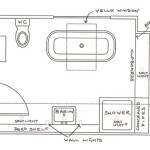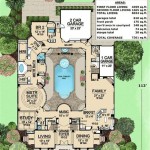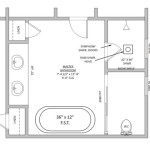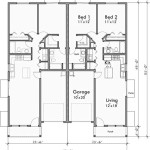Floor Plans for Tiny Houses
Tiny houses have become increasingly popular in recent years, offering a more sustainable and affordable way of living. With their smaller size, tiny houses require careful planning to maximize space and functionality. One of the most important aspects of designing a tiny house is creating a well-thought-out floor plan.
### Key ConsiderationsWhen planning the layout of a tiny house, there are several key considerations to keep in mind:
-Functionality:
The floor plan should prioritize functionality, ensuring that all essential elements (e.g., sleeping area, bathroom, kitchen) are included and easily accessible. -Space optimization:
Every square foot is valuable in a tiny house, so the floor plan should maximize space utilization by incorporating built-in storage, multi-purpose furnishings, and convertible spaces. -Flow:
The flow of the house should be smooth and efficient, allowing for easy movement between different areas without feeling cramped or cluttered. -Natural light:
Natural light is crucial for creating a sense of spaciousness and well-being. The floor plan should incorporate windows and skylights to maximize natural light intake. -Storage:
Adequate storage is essential for keeping the tiny house organized and clutter-free. The floor plan should include built-in storage solutions and strategic placement of shelves, drawers, and cabinets. ### Common Floor Plan LayoutsThere are several popular floor plan layouts for tiny houses:
-Single-Level Layout:
All living areas are on one level, providing easy accessibility and a more open feel. -Loft Layout:
Features a sleeping loft above the main living area, creating additional space for sleeping or storage. -Two-Level Layout:
Similar to a loft layout, but with a separate bedroom on the ground floor. -Split-Level Layout:
Uses different levels to create distinct functional areas, such as a kitchen on the main level and a bedroom in the loft. ### Example Floor PlansThe following are some examples of well-designed tiny house floor plans:
-Tiny House on Wheels by Tumbleweed Tiny House Company:
This 20-foot tiny house features a single-level layout with a kitchen, bathroom, and sleeping area. It maximizes space with built-in storage and a Murphy bed. -Kit Haus by Kit Haus:
A 240-square-foot tiny house with a loft layout. The main level has a kitchen, living area, and bathroom, while the loft provides a sleeping space. -Tumbleweed Solana by Tumbleweed Tiny House Company:
This 28-foot tiny house has a two-level layout. The ground floor features a kitchen, living area, and bathroom, while the loft has a bedroom and additional storage. -Modern Tiny House by Tiny Heirloom:
A 320-square-foot tiny house with a split-level layout. The main level has a kitchen, living area, and bathroom, while the upper level has a bedroom and a loft area for additional sleeping or storage. ### ConclusionCreating a well-thought-out floor plan is crucial for designing a functional and comfortable tiny house. By considering key considerations such as functionality, space optimization, flow, natural light, and storage, and exploring different floor plan layouts, you can design a tiny house that meets your unique needs and lifestyle.

Tiny House Floor Plans With Lower Level Beds Tinyhousedesign Design

Tiny House Floor Plans Design Your

Tiny House Plan Examples

12x24 Tiny House Plans Floor Layout Shed

Tiny House Floor Plans 32 Home On Wheels Design

Tiny House Floor Plans Absolute Houses

10 X 20 Tiny Home Designs Floorplans Costs And Inspiration The Life

2 Bedroom Tiny House Plans Blog Eplans Com

The Athrú Tiny House Humble Homes

Tiny House Design Floor Plans

